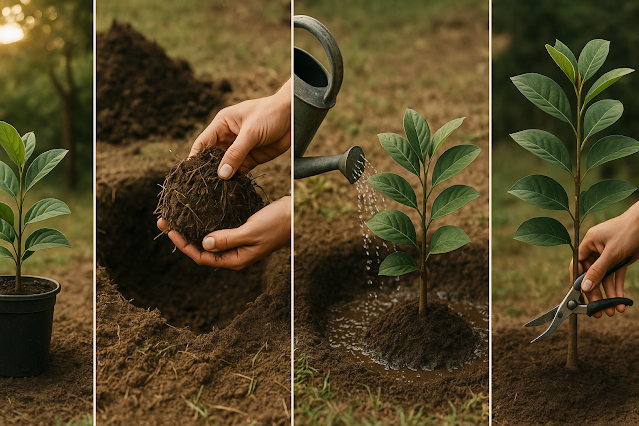How to Grow Magnolia × alba: The Fragrant Journey of White Champaca
In Indonesian culture, Magnolia × alba—affectionately called bunga kantil—is cherished not only for its beauty but also for its calming presence and deeply symbolic scent rooted in sacred customs. Known for its delicate, creamy-white petals and heady, spiritual aroma, this evergreen magnolia can transform any garden corner into a space of quiet elegance. Let’s explore the thoughtful steps needed to nurture this exotic beauty into full flourish.
1. Choosing the Right Spot: Where Fragrance Meets Light
Bunga kantil thrives best in locations that blend filtered sunlight with warm, humid air. Avoid overly exposed areas; instead, seek spots that enjoy gentle morning light and partial shade in the afternoon. Full sun in cooler climates is fine, but in equatorial zones, some mid-day shelter is ideal.
2. Soil Preparation: Rich, Loose, and Ever-Draining
This magnolia variety is fond of slightly acidic soil that is loamy, loose, and drains quickly. For an optimal growing base, combine native earth with decomposed leaf matter, coarse sand for aeration, and well-matured organic waste to enrich fertility. Avoid compact clay—Magnolia × alba doesn’t appreciate wet feet or stagnant roots.
3. Planting the Sapling: Handling with Gentle Hands
Prepare the planting site by digging a hole that comfortably exceeds the root ball in width, but mirrors its height to avoid burying it too deep. Should the roots seem tightly bound or circling the base, carefully untangle them by hand to encourage natural outward growth. Place the young plant so its root base sits level with the natural soil line, keeping it neither raised nor submerged. Backfill the space using crumbly soil, pressing it down gently to eliminate trapped air, then water thoroughly to ease the plant’s transition into its new setting.
4. Watering Routine: Steady, Not Soggy
Water young trees every few days during dry periods, ensuring that the soil remains moist but never soggy. Once established, this magnolia is moderately drought-tolerant. A layer of organic mulch will help lock in moisture and regulate soil temperature, while also feeding the roots slowly over time.
5. Pruning for Shape and Health
Trim the branches in the final stretch of winter or at the dawn of spring, just before fresh growth begins to emerge. Trim off dead twigs, crowded shoots, or any extensions that disrupt the tree’s natural balance and form. Don’t overdo it—Magnolia × alba prefers minimal interference. It naturally takes on a rounded, upright form that rarely needs harsh shaping.
6. Feeding Your Magnolia: Subtle Nourishment
Every few months during the growing season, apply a balanced, slow-release fertilizer rich in phosphorus to encourage flower production. Avoid high-nitrogen fertilizers, which favor leafy growth over blossoms. Alternatively, sprinkle crushed eggshells and bone meal around the base as a gentle, organic boost.
7. Pest and Disease Watch
White champaca is relatively pest-resistant, but watch for signs of scale insects or aphids. If small pests begin to settle on the leaves or stems, a gentle mist of neem-based solution can offer relief without harming the plant. The more serious concern lies below ground—excess moisture or compacted soil can quietly trigger root decay.
8. Encouraging Bloom: Patience Pays Off
It may take two to three years before your kantil begins to bloom regularly. Be patient. Once flowering begins, expect intensely aromatic blossoms throughout the warm months. The fragrance deepens at dusk, attracting moths and stirring memories.

Comments
Post a Comment